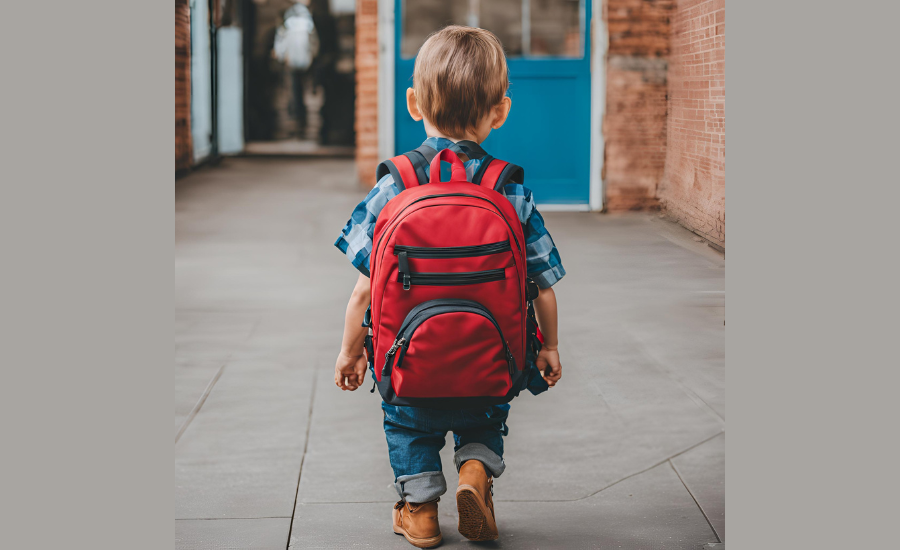When choosing a backpack for a kindergarten student, it’s important to focus on several key factors to ensure the backpack is comfortable, practical, and safe. Here’s a detailed guide to help you make the best choice for what size backpack for kindergarten would be fit.
Factors to Consider

- Size and Fit
- Overall Size: The backpack should be proportionate to your child’s size. A backpack that is too large can be cumbersome and lead to poor posture. Ideally, the backpack should not be wider than the child’s torso and should sit just below the shoulders to about four inches below the waist .
- Weight Capacity: A good rule of thumb is that the backpack should not weigh more than 10-15% of your child’s body weight. This helps prevent strain on their back and shoulders.
- Straps and Padding
- Shoulder Straps: Look for wide, padded, and adjustable shoulder straps to distribute the weight evenly across the shoulders. Thin straps can dig into the shoulders and cause discomfort.
- Back Padding: A padded back panel adds comfort and helps protect against items inside the bag poking into your child’s back
- Compartments and Organization
- Main Compartment: Ensure there’s enough space for larger items like books and a lunchbox. Some backpacks offer padded compartments for electronics if your child will be carrying a tablet.
- Additional Pockets: Look for smaller pockets and compartments to help organize school supplies like pencils, crayons, and snacks. Side mesh pockets are great for water bottles .
- Material and Durability
- Lightweight and Durable: Choose a backpack made from lightweight yet durable materials like nylon or polyester. This ensures the bag can withstand daily wear and tear without adding unnecessary weight.
- Additional Features
- Reflective Material: For added safety, especially if your child walks to school or waits at the bus stop, choose a backpack with reflective elements.
- Chest and Waist Straps: These can help distribute the weight more evenly and prevent the backpack from swaying.
Backpack Size Recommendations

For kindergarten students, a backpack with a height of about 12-15 inches, a width of around 8-10 inches, and a depth of 4-5 inches is typically suitable. This size range ensures that the backpack is large enough to carry essential items but small enough to fit comfortably on a young child’s back.
What to Pack Inside a Kindergarten Backpack
Packing a kindergarten backpack efficiently ensures that your child has everything they need for a successful day at school. Here’s a detailed list of recommended items that we feel are essential to keep.

Essential Items
- Folder: A sturdy, plastic folder for carrying homework, permission slips, and important notes between school and home .
- Lunchbox: A compact, insulated lunchbox to keep food fresh and organized. Ensure it fits easily into the main compartment of the backpack.
- Water Bottle: A spill-proof water bottle to keep your child hydrated throughout the day. Place it in a side mesh pocket for easy access.
- Pencil Case: A small pencil case containing pencils, crayons, a sharpener, and an eraser. This helps keep writing tools organized and easily accessible.
- Change of Clothes: A complete change of clothes, including underwear and socks, in a plastic bag. This is useful in case of spills or accident .
- Comfort Item: A small comfort item, such as a favorite toy or a small stuffed animal, to help your child feel secure at school.
- Notebook: A small notebook for drawing or practicing writing. This encourages creativity and can be used during free time.
- Hand Sanitizer: A travel-sized hand sanitizer to help maintain hygiene throughout the day.
- Face Mask: If required, pack an extra face mask in a resealable bag to ensure cleanliness and safety.
Tips for Packing

- Even Weight Distribution: Teach your child to pack the heaviest items, like books, closest to their back to ensure the weight is distributed evenly.
- Use All Compartments: Utilize all the pockets and compartments to spread out the weight and keep items organized.
- Adjust the Straps: Regularly check and adjust the straps to ensure the backpack sits correctly on your child’s back. The bottom of the backpack should rest in the curve of the lower back, not below the waistline.
- Regular Check and Repack: Check the backpack regularly to remove unnecessary items and restock essentials, ensuring it stays light and organized.
- Label Everything: Label all items with your child’s name to avoid mix-ups or lost belongings.
Conclusion
Choosing the right backpack for your kindergartner involves considering size, fit, and features that enhance comfort and organization. By focusing on these factors, you can help your child carry their school essentials safely and comfortably.
By following this guide, you can ensure that your kindergartener has a well-packed, organized, and comfortable backpack, ready for a successful day at school.




